Women’s Liberation Movement Worksheets
Do you want to save dozens of hours in time? Get your evenings and weekends back? Be able to teach about the Women’s Liberation Movement to your students?
Our worksheet bundle includes a fact file and printable worksheets and student activities. Perfect for both the classroom and homeschooling!
Resource Examples
Click any of the example images below to view a larger version.
Fact File
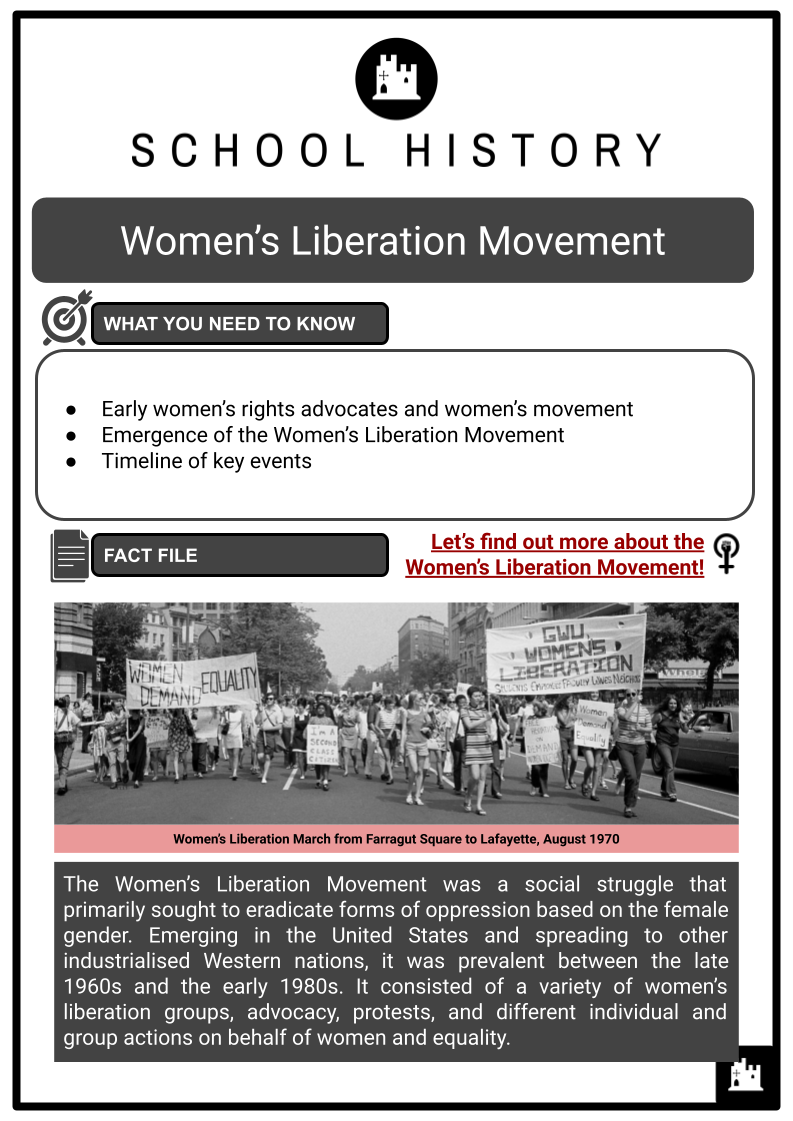
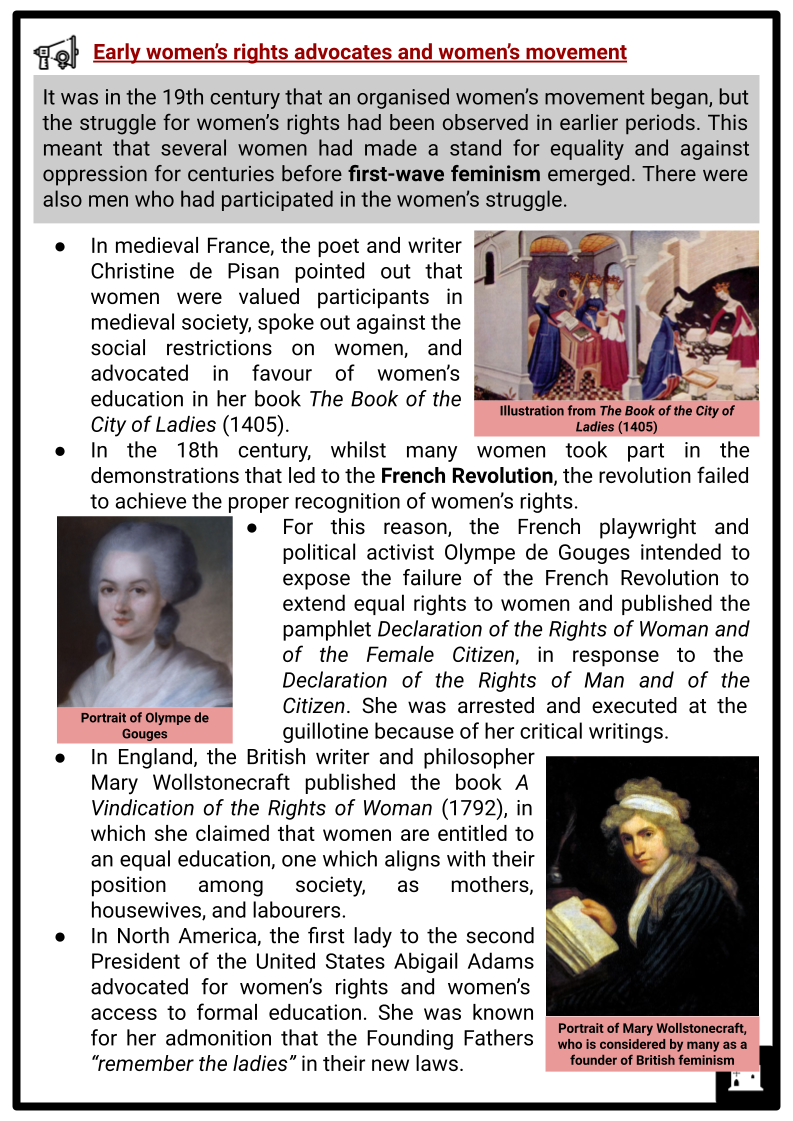
Student Activities
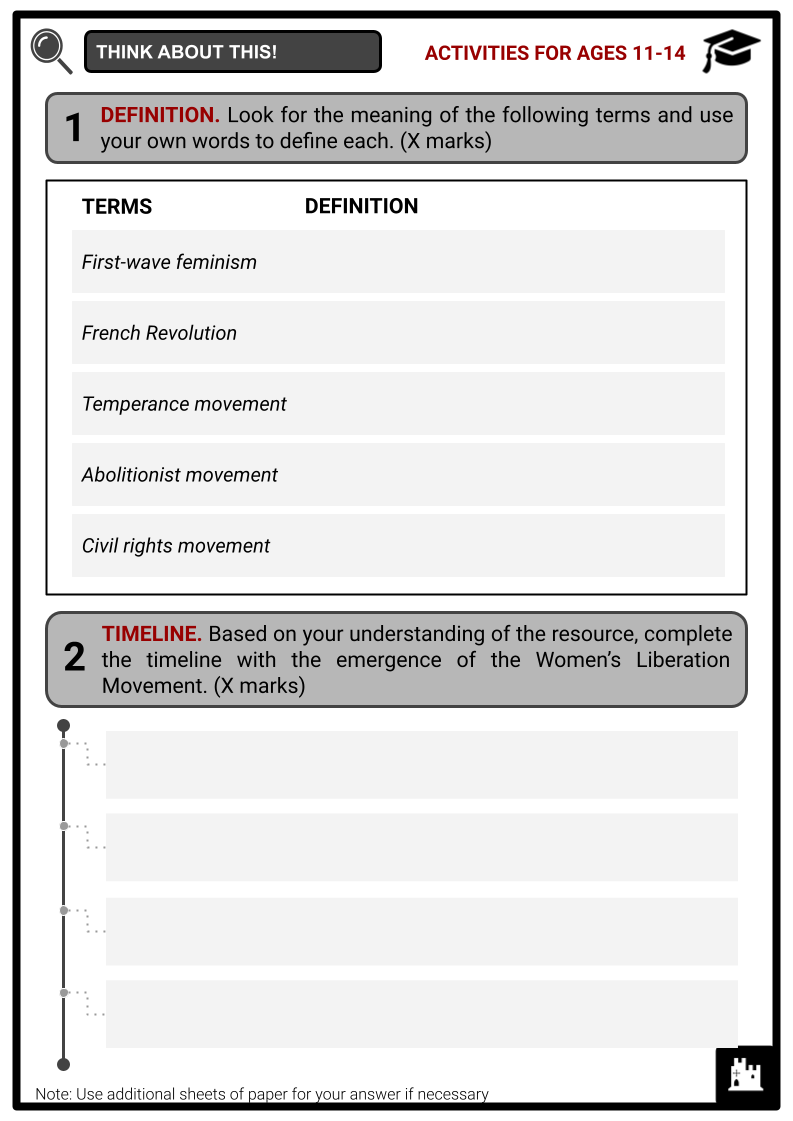
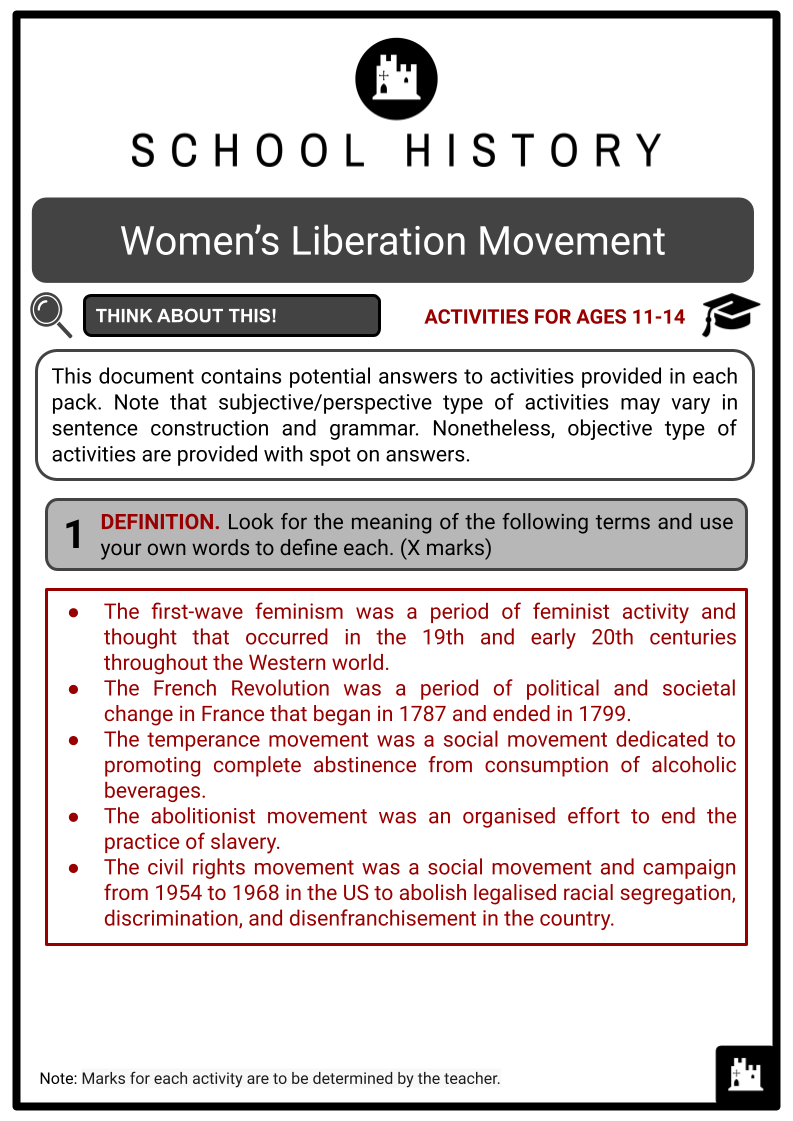
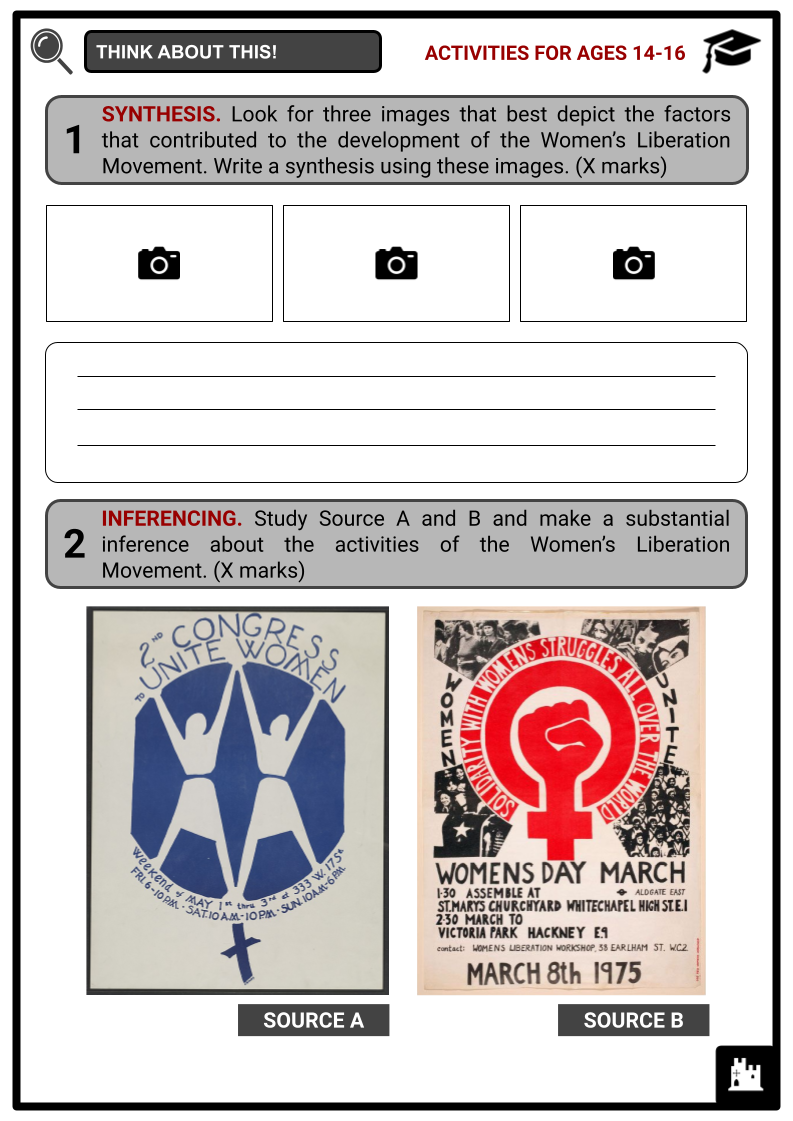
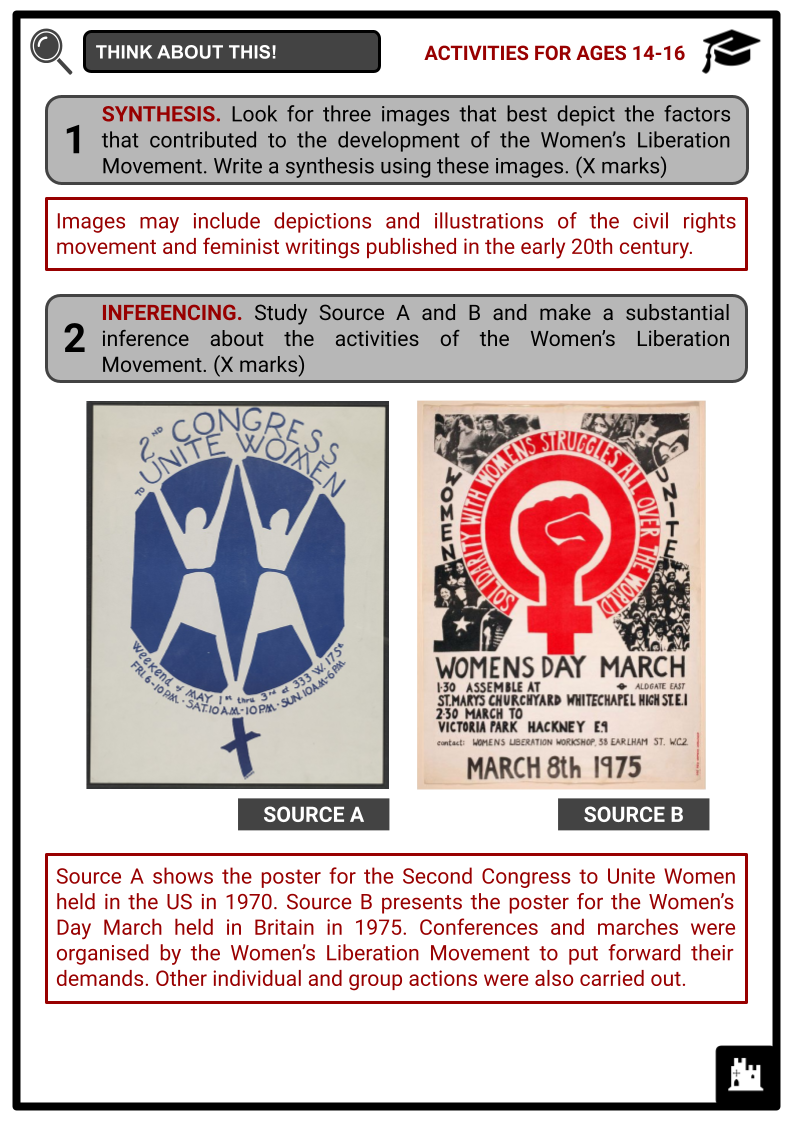
Summary
- Early women’s rights advocates and women’s movement
- Emergence of the Women’s Liberation Movement
- Timeline of key events
Key Facts And Information
Let’s find out more about the Women’s Liberation Movement!
The Women’s Liberation Movement was a social struggle that primarily sought to eradicate forms of oppression based on the female gender. Emerging in the United States and spreading to other industrialised Western nations, it was prevalent between the late 1960s and the early 1980s. It consisted of a variety of women’s liberation groups, advocacy, protests, and different individual and group actions on behalf of women and equality.
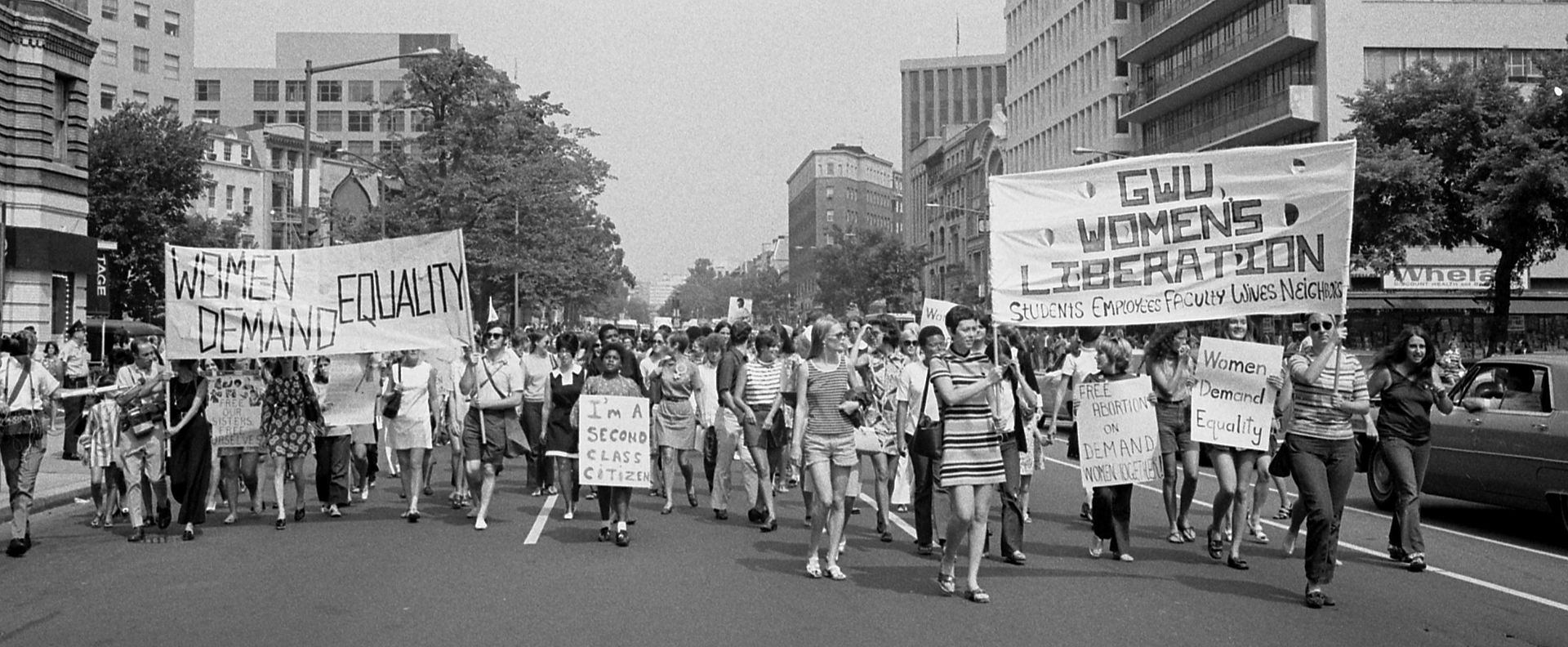
Early women’s rights advocates and women’s movement
- It was in the 19th century that an organised women’s movement began, but the struggle for women’s rights had been observed in earlier periods. This meant that several women had made a stand for equality and against oppression for centuries before first-wave feminism emerged. There were also men who had participated in the women’s struggle.
- In medieval France, the poet and writer Christine de Pisan pointed out that women were valued participants in medieval society, spoke out against the social restrictions on women, and advocated in favour of women’s education in her book The Book of the City of Ladies (1405).
- In the 18th century, whilst many women took part in the demonstrations that led to the French Revolution, the revolution failed to achieve the proper recognition of women’s rights.
- For this reason, the French playwright and political activist Olympe de Gouges intended to expose the failure of the French Revolution to extend equal rights to women and published the pamphlet Declaration of the Rights of Woman and of the Female Citizen, in response to the Declaration of the Rights of Man and of the Citizen. She was arrested and executed at the guillotine because of her critical writings.
- In England, the British writer and philosopher Mary Wollstonecraft published the book A Vindication of the Rights of Woman (1792), in which she claimed that women are entitled to an equal education, one which aligns with their position among society, as mothers, housewives, and labourers.
- In North America, the first lady to the second President of the United States Abigail Adams advocated for women’s rights and women’s access to formal education. She was known for her admonition that the Founding Fathers “remember the ladies” in their new laws.
- Beginning in the 19th century in North America, demands for greater freedom for women joined the calls for the end of slavery. Many female leaders of the abolitionist movement found an alarming irony in campaigning for the rights of African Americans, which they themselves were unable to enjoy.
- The Temperance movement in the US, whose goals included improving the lives of women whose drunken husbands were driven to abuse, began at a national level in the 1820s and would gather strength and support for the following hundred years. It was regarded as the foremost example of feminism in America.
- Meanwhile, notable female abolitionists such as Lucretia Mott and Elizabeth Cady Stanton put forward the issue of women’s rights at the Seneca Falls Convention in 1848, and boldly proclaimed in their Declaration of Sentiments that “We hold these truths to be self-evident; that all men and women are created equal.” They demanded the right to vote, which many thought to be too outrageous.
- This was followed by the first national convention of the women’s movement in Worcester, Massachusetts, in 1850 and another convention in Syracuse, New York, in 1852, in which Stanton joined with the dynamic suffragist leader Susan B. Anthony. This was the beginning of the women’s suffrage movement.
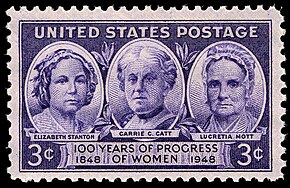
- The women’s suffrage movement, which spread to Western countries, defined much of feminism for several decades. Successes were eventually achieved by the movement: New Zealand became the first sovereign state to give women the right to vote in 1893, succeeded by Australia in 1902 and Finland in 1906.
- The interwar period saw the extension of voting rights to women in more countries, particularly in Canada (1917), Germany (1918), Austria and the Netherlands (1919). In Britain, the right to vote was granted to women over 30 in 1918. In the US, the Nineteenth Amendment to the US Constitution was passed in 1920, giving women the right to vote in all states. This is considered by many scholars as the end of first-wave feminism.
Emergence of the Women’s Liberation Movement
- Following the end of the Second World War, women’s lives in developed countries were transformed remarkably. Household technology minimised the burdens of home-making, life expectancies improved notably, and the expansion of the service sector created thousands of jobs that did not require physical strength. Nevertheless, sexual inequalities existed, reinforced by legal precedents and cultural attitudes toward women’s work.
- In the 1950s–60s, the Civil Rights Movement was generating a climate of protest as activists asserted rights and new positions in society for people of colour in the US.
- Women filled key positions in organisations fighting for civil rights, but they often found that those organisations could still be swayed by patriarchal notions of male superiority.
- Nevertheless, the Civil Rights Movement contributed substantially to women’s rights, with the passage of the Civil Rights Act of 1964 which provided broad workplace protections to women and minorities.
- The publication of Le Deuxième Sexe (1949) by the French writer and philosopher Simone de Beauvoir was also key to the development of the women’s movement during this period.
- Beauvoir wrote about the oppressive effects of prevailing ideas of femininity and posited the idea that equality did not necessitate women being masculine to become empowered.
- Beauvoir’s book was regarded as a landmark work of feminist philosophy. Its English translation was published in the US in 1953 and subsequently influenced many women, including the American writer and activist Betty Friedan.
- Friedan published The Feminine Mystique in 1963, in which she spoke about the widespread unhappiness of women in the 1950s and early 1960s despite living in material comfort and being married with children.
- Friedan’s book was an immediate bestseller and raised the consciousness of huge numbers of women, particularly older, married women who found the traditional roles of housewife and mother unfulfilling. It is widely credited with sparking the beginning of second-wave feminism in the US.
- Whilst it inspired many women to call for changes, there was no existing movement to accommodate their cause.
- This changed in 1966, as many women including Friedan recognised the need to create their own national pressure group, and so the National Organisation for Women (NOW) was formed.
- With its aim to work within established social and legal systems to gain equality, the NOW soon felt the pressure from an emerging movement of radical feminists who were of the view that traditional power structures had failed women and needed to be reformed.
- This movement, which named itself the Women’s Liberation Movement (WLM), had its own goals and style that differed from those of the NOW. By this time, feminism had begun to be referred to by many people as ‘women’s liberation’.
- Many of its members were young veterans of the civil rights, anti-war and student movements who sought to apply the radical social analyses they had picked up to the situation of women.
- Different women’s liberation groups were formed, and the movement quickly spread to various industrialised Western nations.
- The movement generally rejected hierarchical structure, with most groups operating as collectives where all women could participate equally.
- Some women’s liberation groups were founded by members of established left-wing organisations. Some also clashed with existing women’s rights groups.
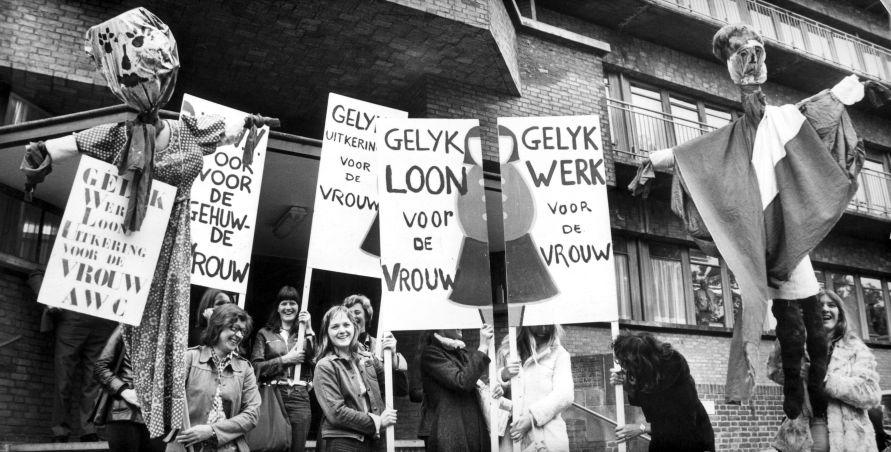
- Despite the disparities among groups, radical feminists shared the fundamental objective of organising a mass women’s liberation movement to restructure power relations between the sexes and thus revolutionise society. They used two main organising methods:
- Consciousness-raising discussions, in which women in small groups gained an understanding of their oppression through shared personal testimony.
-
- Women’s liberation writings, which were proliferated through feminist newspapers, journals, conferences, and radio programs on radical stations.
- Much like the first-wave feminism that arose during a period of social reform, the WLM, sometimes called second-wave feminism, occurred amidst other social and political movements and gained strength as a political force in the next decade.
Timeline of key events
Following the spread of the WLM in North America in the 1960s, Europe likewise saw a growth in feminist activities during this period, which soon gained momentum and continued through the 1980s.
- In October 1967, US President Lyndon B. Johnson banned discrimination on the basis of sex in hiring and employment in both the federal workforce and on the part of government contractors.
- Also in October 1967, the Abortion Act legalised the termination of a pregnancy at up to 28th week in England, Wales and Scotland, but required the consent of two registered medical practitioners. It also regulated the tax-paid provision of such medical practices through the National Health Service (NHS).
- In June 1968, the Ford Machinist’s Strike in Dagenham participated by women made the headlines. After negotiating with the women strikers, MP Barbara Castle becomes the First Secretary of State. This strike inspired more demonstrations and ultimately led to the passing of the Equal Pay Act of 1970.
- In September 1968, the New York Radical Women organised a feminist protest at the Miss America pageant in Atlantic City, New Jersey, to address the image of womanhood portrayed by the pageant. They threw bras, high heels, curlers and girdles into a “Freedom Trash Can”. News accounts widely, and incorrectly, described the protest as a “bra-burning”, which became associated with the movement and contributed to the stereotype of feminists as angry.
- From October 1968, meetings of women activists were organised in France, and their activities became known as MLF or Mouvement de libération des femmes.
- In November 1969, the NOW initiated the first Congress to Unite Women to establish common ground between moderate and radical feminist interests of the WLM. It was attended by more than 500 feminists, but achieving its goal proved impossible. Other regional conferences followed.
- In early 1970, the first National Women’s Liberation Conference was held in London and attracted over 600 women. Attendees voted unanimously on four demands, such as equal pay, equal educational and job opportunities, free contraception and abortion on demand, and free 24-hour nurseries. This was followed by conferences held in other parts of Britain.
- In November 1970, female protesters went to Royal Albert Hall to condemn the Miss World pageant and object to the idea of women being judged by their physical appearance. Around 50 women were fined, and the Women’s Liberation Network took care of the fines for the protesters.
- In March 1971, the first national Women’s Liberation march in London took place, participated by an estimated 4,000 men, women and children. It was organised by the Women’s National Coordinating Committee and became the largest International Women’s Day (IWD) event since the Suffragette era.
- In April 1971, 343 women in France signed what became known as the Manifesto of the 343, which demanded free access to contraception and abortion. This petition became one of the primary rallying points of the movement in the country.
- In May 1971, members of the Irish Women’s Liberation Movement led the Contraceptive Train, in which the protesters boarded a train in Dublin and travelled to Belfast to purchase condoms, then upon the return trip, distributed the contraband condoms to the crowd. At the time, the pill was the only legal contraceptive but could not be prescribed except as a medication to regulate menstrual cycles.
- In October 1971, the Equal Rights Amendment won the requisite two-thirds vote from the US Congress thanks to Bella Abzug, Friedan and Gloria Steinem. It was passed by the US Senate in March 1972 but fell short of the number of states needed for ratification. It would have been the 27th Amendment and would have provided for the legal equality of the sexes and prohibited discrimination on the basis of sex.
- In March 1972, Title IX of the Education Amendments was enacted, prohibiting sex discrimination in all aspects of education programmes that receive federal support. In the same year, the US Supreme Court confirmed the right to use birth control by unmarried couples.
- In 1973, in the US Supreme Court’s controversial ruling on Roe v. Wade, abortion was legalised in the US.
- During this period, the IWD was revived in Western nations owing to the increasing strength of feminist demands. The United Nations was to officially recognise 8 March as the IWD in 1977.
- In 1974, the National Women’s Aid Federation, present-day Women’s Aid, was established in England to coordinate all of the women’s refuges and shelters across the nation. It provided practical and emotional assistance as part of a range of services to women and children experiencing violence.
- Meanwhile, in the US, Congress made housing discrimination on the basis of sex and credit discrimination against women illegal.
- In 1975, the Employment Protection Act and the Sex Discrimination Act were passed in Britain, which made discrimination on the grounds of gender, marriage or pregnancy unlawful and introduced statutory maternity leave. In the following year, the Domestic Violence and Matrimonial Proceedings Act was introduced to protect women and children from domestic violence.
The WLM had a number of accomplishments, hence there had been a growing sense that its core goals had been achieved already. By the late 1970s, it started to lose momentum, as numerous subgroups formed new organisations for themselves and debates within feminism contributed largely to the movement’s decline. It came to a close by the early 1980s and a large-scale feminist movement would not re-emerge for another decade.
Image Sources
- https://upload.wikimedia.org/wikipedia/commons/thumb/5/56/Leffler_-_WomensLib1970_WashingtonDC_%28cropped%29.jpg/1920px-Leffler_-_WomensLib1970_WashingtonDC_%28cropped%29.jpg
- https://upload.wikimedia.org/wikipedia/commons/thumb/e/e8/Progress_of_Women_issue_of_1948%2C_3c.jpg/290px-Progress_of_Women_issue_of_1948%2C_3c.jpg
- https://upload.wikimedia.org/wikipedia/commons/5/58/Vrouwen_van_het_Amsterdams_Werklozen_Comitee_demonstreren_bij_het_Departement_van_Sociale_zaken_in_Den_Haag_voor_gelijke_-_SFA001012657.jpg
Frequently Asked Questions
- What was the Women's Liberation Movement?
The Women's Liberation Movement, also known as the feminist movement, was a social and political movement that aimed to achieve equality for women in all aspects of society, including political, economic, and social rights.
- When did the Women's Liberation Movement begin?
The Women's Liberation Movement gained momentum in the late 1960s and early 1970s, but its roots can be traced back to the 19th-century suffrage movements and earlier feminist movements.
- What were some key events or milestones of the Women's Liberation Movement?
Key events and milestones of the Women's Liberation Movement, which marked significant strides towards gender equality, include the Seneca Falls Convention in 1848, the passage of the 19th Amendment in 1920, the publication of Betty Friedan's influential book "The Feminine Mystique" in 1963, and the Roe v. Wade Supreme Court decision in 1973.
